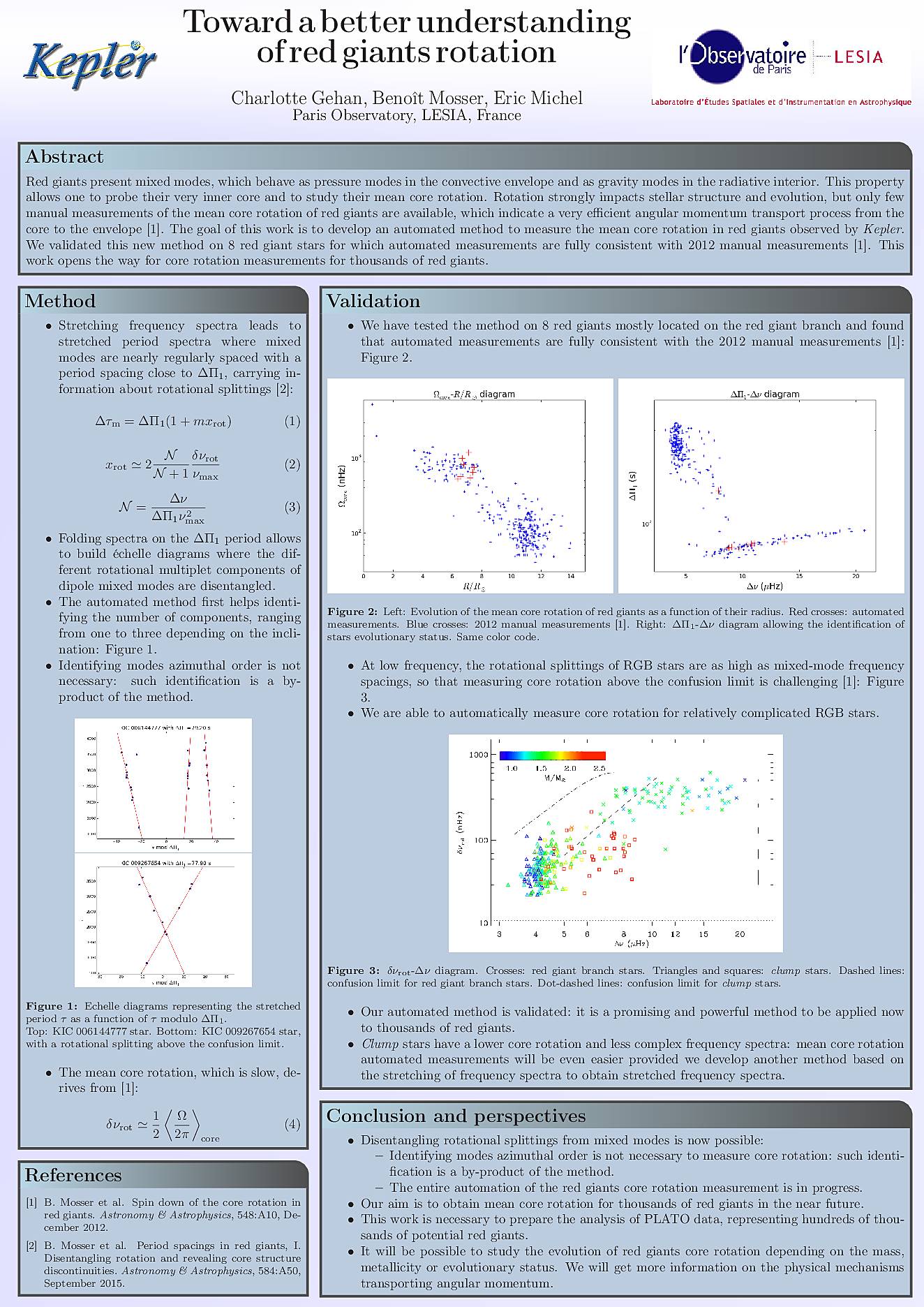Affiliation
Paris Observatory, LESIA
Main category
Natural Sciences (Astrophysics and Astrononmy)
Abstract
Red giant stars have proved to be asteroseismic targets of choice: conditions in their interior are met to couple pressure waves propagating in the envelope and gravity waves propagating in the core, so that we have a direct view on their core through mixed modes, which is not the case for main-sequence stars. In particular, asteroseismology of red giants gives us the opportunity to study their internal rotation, especially their core rotation. Rotation is known to deeply impact the evolution of stars, but including rotation in stellar evolution models is still challenging. Models predict central rotation rates at least ten times too large compared to asteroseismic measurements. This implies that angular momentum transport is at work in stellar interiors, whose physical mechanisms are not yet fully understood.
It is thus of prime importance to know how internal rotation evolves in time. This is particularly true for red giants, in order to better characterise the physical processes operating in the deepest region of these stars. Such a study requires core rotation measurements for a maximum number of red giants. In this context, I have developed an automatic method to determine the mean core rotation of red giant stars presenting different evolutionary stages with Kepler data. In the future, obtaining mean core rotation rates for thousands of red giants will improve the characterisation of the physical mechanisms causing angular momentum transport in these stars, and therefore our understanding of stellar evolution. I will present preliminary results that I obtained with a new and promising method to determine automatically core rotation rates of red giants. Such an automated measurement of the core
rotation of red giants will moreover be required to analyse the hundreds of thousands of oscillation spectra that PLATO should provide in a few years. Hence this automated method is paving the way for the future PLATO data.
Do you have problems viewing the pdf-file? Download poster
here
If the poster contains inappropriate content, please
report the poster. You will be redirected to the landing page.
